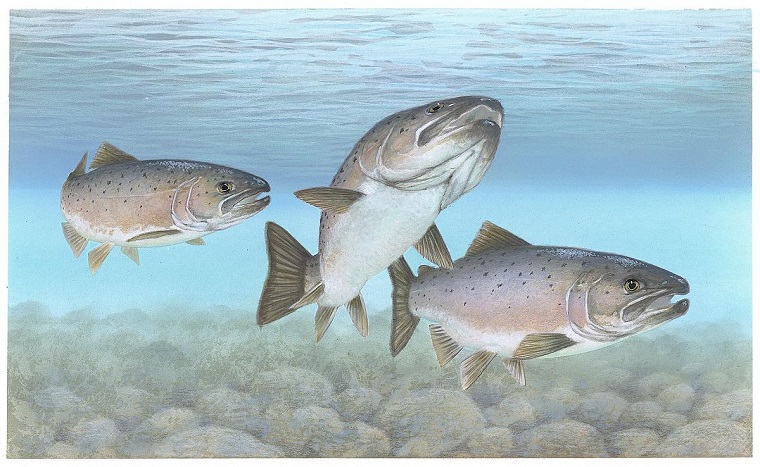Genetic Study of Early Maturing Salmon Yields Surprise Discovery
By Olivia Roscow
1 May 2019

Salmon is a popular food staple around the world and farmed Atlantic salmon is Canada’s top aquaculture export. With a global reputation for producing high quality fish to uphold, Canadian fish farmers are continually seeking ways improve the taste, quality, and appearance of the salmon they produce.
One issue affecting the quality of farmed Atlantic salmon is a phenomenon known as “grilsing”, which is when salmon reach sexual maturity early. These early maturing fish are slow to gain weight, have increased susceptibility to disease and mortality, and are less desirable to consumers in taste and appearance. No one knows exactly what causes early maturation in some fish, but new research by Prof. Elizabeth Boulding in the Department of Integrative Biology has brought the answer one step closer.
Fish biologists believe that grilsing is most likely influenced by environmental factors, but evidence from Europe suggests that genetics play a role as well. This is what led Boulding and her colleagues to investigate if the genetic “predictors” of early maturation in Atlantic salmon from Europe also apply to salmon here in Canada. By identifying the genes involved in grisling, says Boulding, fish farmers could selectively breed fish stock that are less likely to produce early maturing fish.
Boulding and her team examined the specific region of Atlantic salmon DNA that was associated with grilsing in Europe, but found that it was not linked to grisling in Canadian populations of Atlantic salmon. However, the team found another section of DNA - on an entirely separate chromosome - that holds promise for identifying Canadian salmon that are more likely to grilse.
According to Boulding, scientists already know that Atlantic salmon from Europe and Canada are genetically different in surprising ways, including having different numbers of chromosomes, but the results suggest that there are other important differences still waiting to be discovered.
“Once I saw the data, I realized I wasn’t seeing the patterns I had expected,” says Boulding. “I think we need to re-evaluate what we think we know about different populations of Atlantic salmon.”
Boulding’s discovery suggests that, at least for the grilsing trait, the North American and European varieties of Atlantic salmon are remarkably different, and breeding strategies employed in one geographical area may not work at all in another area. The surprising difference in “genetic architecture” also indicates that more work needs to be done to fully understand the cause of grisling in Atlantic salmon in Canada.
“In Europe, researchers have compared the differences in early maturation between males and females. That’s where I’d like to go next with this research,” says Boulding.
The project is part of Boulding’s larger research program on on trait-gene relationships and trait heritability, which is the likelihood that a trait can be inherited and is not a result of chance or the environment. In this way, Boulding’s research is not only helping to produce better fish breeding programs, but providing greater insight on how animal populations diverge and differentiate from each other over time.
This research was funded by Genome Canada , Kelly Cove Salmon Ltd., Cooke Aquaculture Inc., National Research Council and Natural Sciences and Engineering Research Council of Canada.
Read the full study in the journal Aquaculture. (Login Required)
Read about other CBS Research Highlights.